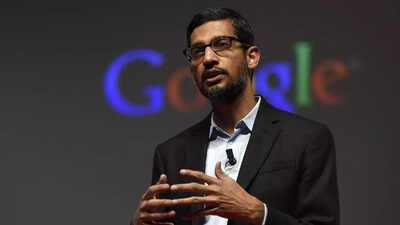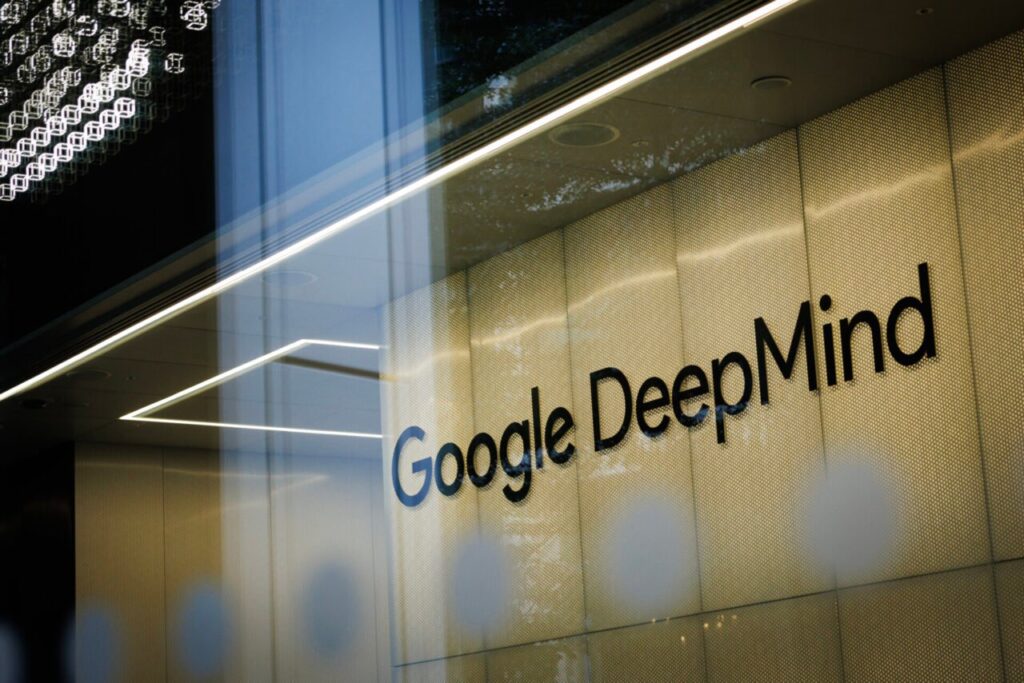💡 Google’s AI Power Move
Table of Contents
✍️ Introduction: When AI Isn’t Just Sci-Fi Anymore
Have you ever paused mid-scroll and thought, “Wow, AI is everywhere now”? From the moment we ask Google Assistant for the weather to using auto-complete while typing an email, artificial intelligence has quietly, yet powerfully, slid into our everyday lives. But here’s the thing — behind all those slick tools and smart suggestions is a battle we don’t see. A high-stakes race between tech giants trying to build the most powerful brain in the digital world.
At the front of that race? Google’s AI.
And recently, Google made a move so massive, it’s making even the most seasoned tech folks raise their eyebrows: an $85 billion bet on the future of AI. Let’s talk about what that means — not in tech jargon, but in plain, honest, human language.

🏗️ Google’s AI War Chest: What’s the $85 Billion For?
So, Google — or more accurately, Alphabet (its parent company) — just revealed it’s spending $85 billion this year. Yep, you read that right. Billion, with a B. But this isn’t just random spending. This is all-in, chips-on-the-table investment in AI infrastructure — the actual buildings, servers, chips, and systems that make artificial intelligence work.
Why So Much?
Because the demand is out of control. In just a few months, the number of AI “tokens” Google processes (basically the units of language AI reads and writes) jumped from 480 trillion to 980 trillion — every single month. That’s mind-blowing. And every one of those tokens needs computing power, data storage, and lightning-fast connections.
So what is Google doing?
- Building more data centers across the globe.
- Speeding up construction timelines like never before.
- Packing those centers with custom-made AI chips and servers.
This isn’t just “keeping up.” This is Google trying to own the AI future.
🔧 Google’s AI Strategy: Own the Whole Stack
Here’s where it gets seriously smart. Google isn’t just building the tech — they’re building the entire system from top to bottom.
What Does “Full-Stack” Mean in AI?
Think of it like this: most companies rent or buy tools. Google builds its own tools, its own factories, and its own blueprints.
Google’s AI Full-Stack Includes:
- Gemini AI models (like Google’s answer to ChatGPT)
- Custom TPU chips (Tensor Processing Units made just for AI tasks)
- Global data centers optimized for massive workloads
- Google Cloud, where other companies rent AI power

This gives them an unfair advantage — and they know it.
Sundar Pichai, Google’s CEO, even said, “nearly all gen AI unicorns use Google Cloud.” That’s huge. It’s like every new AI startup secretly relies on Google just to function.
Even OpenAI, the company behind ChatGPT, is reportedly tapping into Google’s infrastructure to stay online during traffic spikes. Imagine that — rivals depending on the very company they’re trying to beat.
🔮 Why This Isn’t Just a Tech Story — It’s a Human One
Let’s be honest — it’s easy to hear numbers like “$85 billion” and think it’s just rich companies doing rich company things. But this isn’t just about who wins the AI war. It’s about who builds the world we live in next.
Here’s What’s At Stake:
- Search engines that think ahead instead of just matching keywords
- AI that can code, create, and converse more naturally than ever
- Education, health, and finance tools driven by smart, responsive AI
- Jobs that evolve, requiring us to learn, adapt, and grow alongside machines
Go-ogle’s AI spending isn’t about today. It’s about who holds the keys to tomorrow — and right now, Go-ogle’s building the castle and the keys.
📌 Quick Facts: Why Go-ogle’s AI Push Matters
| Key Element | Why It Matters |
|---|---|
| $85B AI Investment | Biggest infrastructure spend in Go-ogle’s history |
| Custom TPU Chips | Speeds up AI processes cheaper and faster |
| Data Centers Worldwide | More AI access globally, especially for cloud customers |
| Gemini AI Models | Competing with ChatGPT, tailored for deep reasoning |
| Dominating AI Cloud Market | Most Gen AI startups rely on Google Cloud |

❓FAQs About Go-ogle’s AI
1. What exactly is Go-ogle’s AI?
It refers to Go-ogle’s suite of artificial intelligence tools, including Gemini (like ChatGPT), Go-ogle Assistant, Search algorithms, and its AI infrastructure — all designed to make machines smarter and more useful.
2. Why is Go-ogle spending $85 billion on AI?
To meet skyrocketing demand and stay ahead in the race. This money is going toward data centers, chips, and infrastructure needed to handle AI’s massive computing needs.
3. What are TPUs and why are they important?
TPUs (Tensor Processing Units) are custom chips built by Google specifically for AI tasks. They make Google’s AI faster, more efficient, and cheaper than relying on outside tech.
4. Is Go-ogle’s AI better than OpenAI’s ChatGPT?
They’re competing neck-and-neck. Google’s Gemini is rapidly improving, and the race is more about who controls the infrastructure and integration than just who has the smartest bot.
5. How does this affect regular people like me?
More intelligent AI means smarter search results, better recommendations, and faster digital tools in everyday apps. It also means your next job — or business — might rely on AI more than you think.
✅ Wrapping It Up: The Future’s Being Built Right Now
So here we are — in the middle of one of the biggest tech shifts in history. While we scroll through memes and ask Go-ogle to play our favorite song, behind the scenes, an $85 billion chess match is unfolding. And Go-ogle’s not just playing — they’re building the board, the pieces, and the rules.
Whether you’re an AI fan or a little freaked out by it all (honestly, both are fair!), one thing’s certain: Go-ogle’s AI push is shaping the world around us. And in the next few years, we’re all going to feel it — in our phones, our work, our homes, and even in our relationships with technology itself.
So let’s stay curious. Let’s ask questions. And let’s remember: the future isn’t just being coded — it’s being built.
